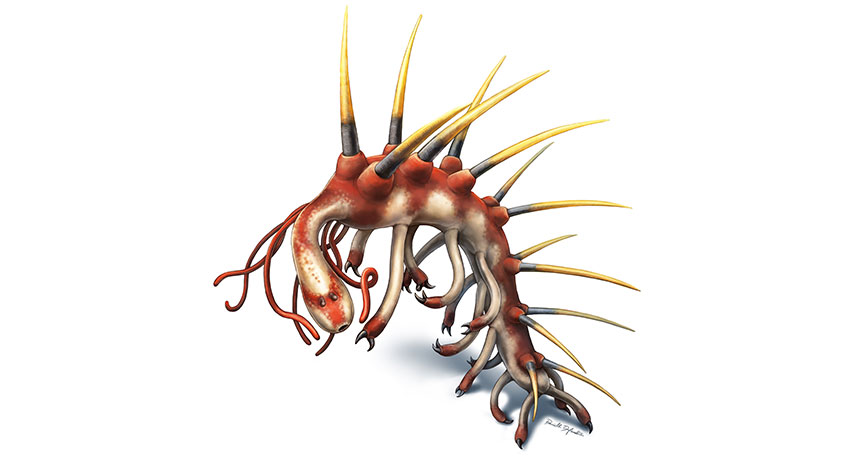Fossil worm adds head to its spiny appearance
New details about ancient creature give hints to evolution of some animals’ teeth

OUT OF A DREAM Hallucigenia sparsa (illustrated) finally has a head, thanks to a new analysis of fossils.
Danielle Dufault